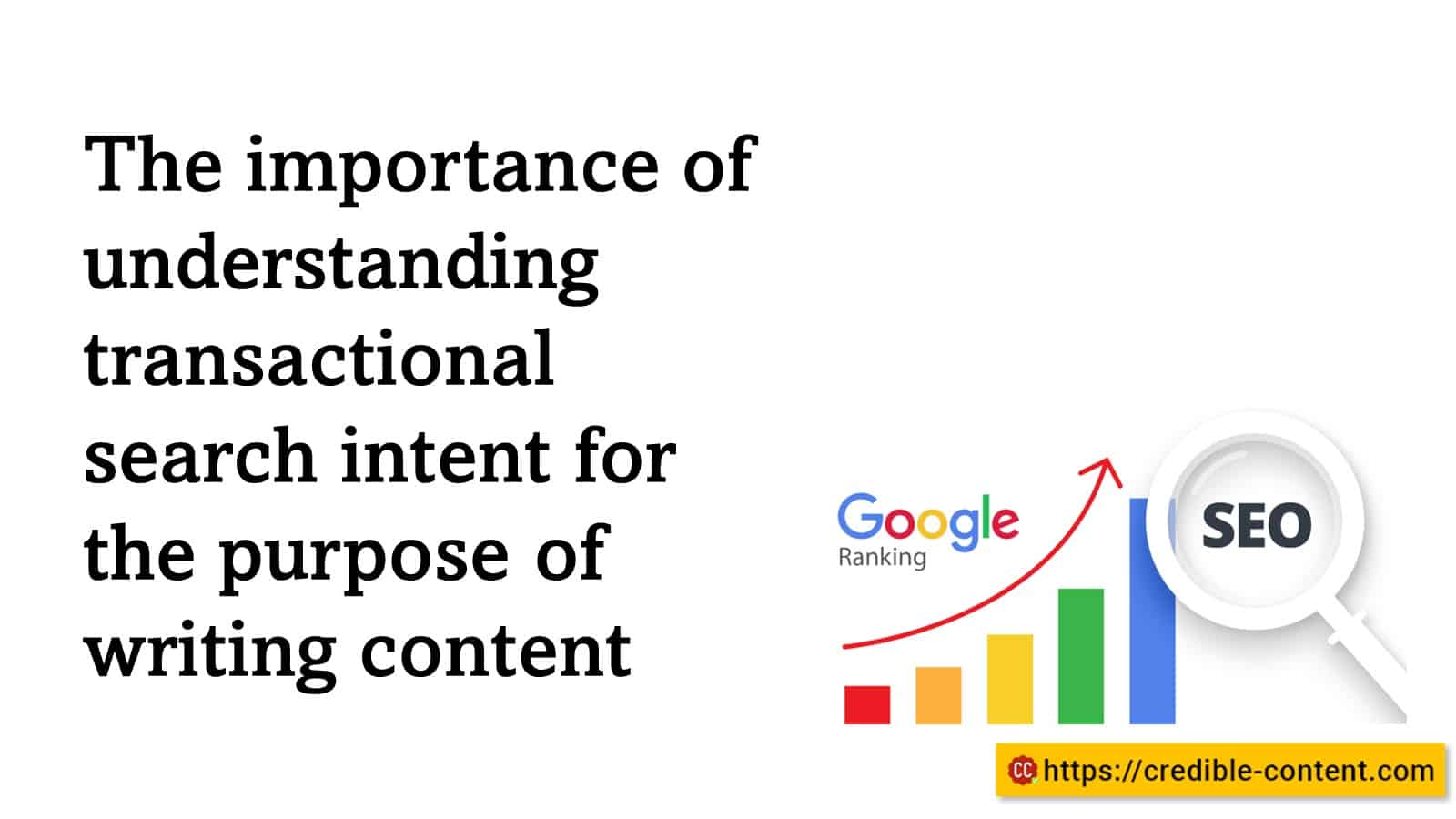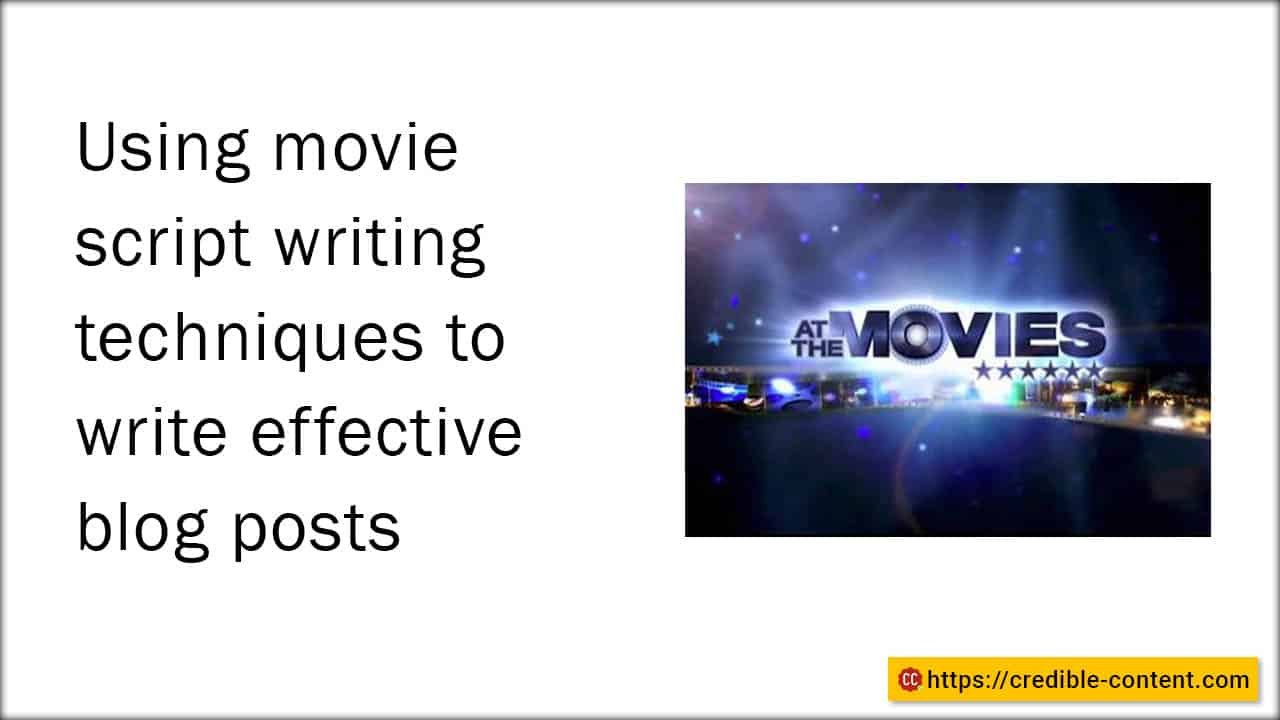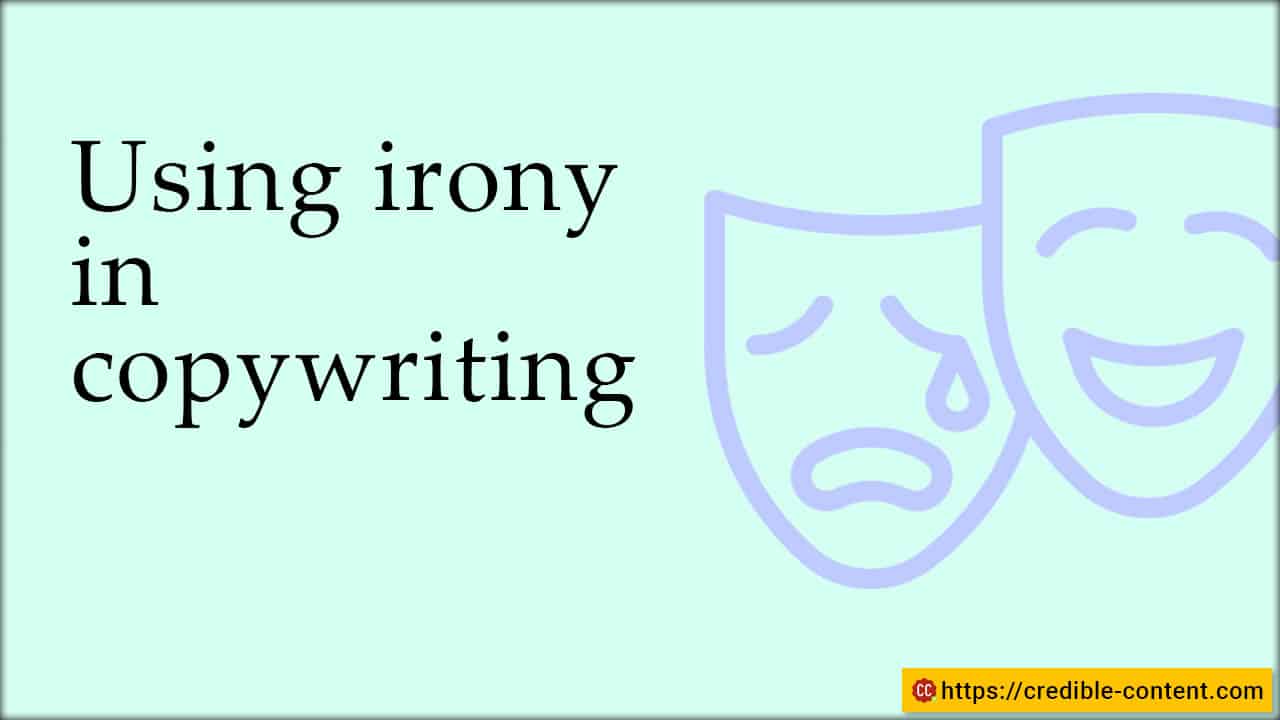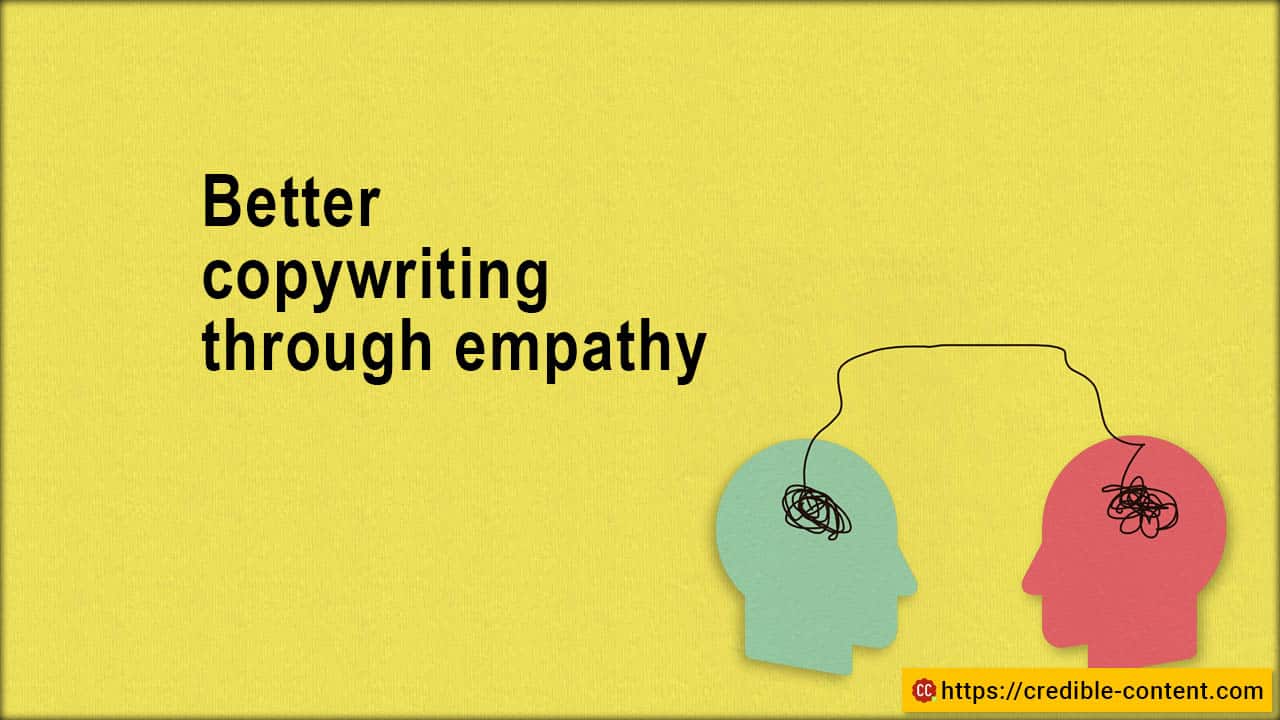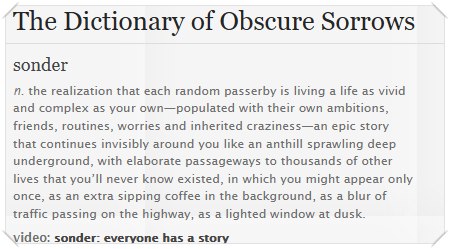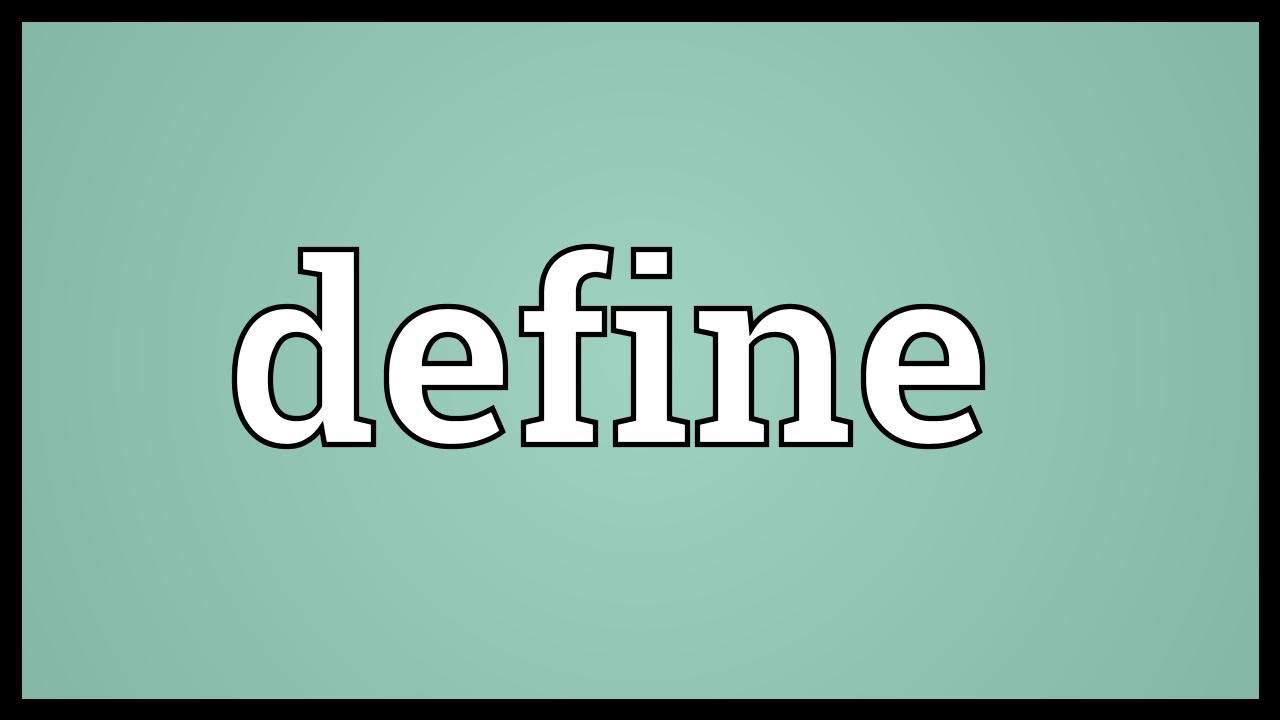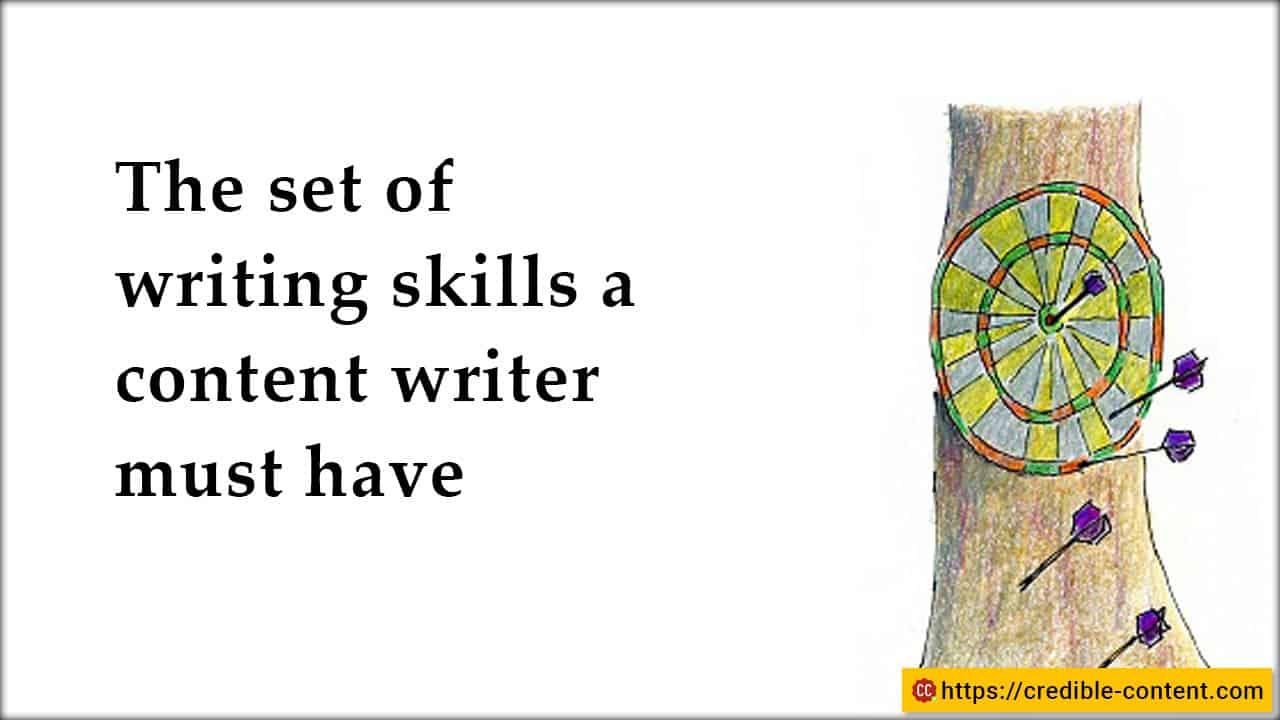
The set of writing skills a content writer must have.
- Strong command of language: A professional content writer should have a solid grasp of grammar, vocabulary, and syntax.
- Research skills: The ability to conduct thorough research on various topics to gather accurate and reliable information.
- Adaptability: Being able to adjust writing style, tone, and format to suit different audiences, platforms, and content requirements.
- Clarity and conciseness: Writing in a clear and concise manner, conveying ideas effectively without unnecessary jargon or wordiness.
- Creativity: Having the ability to think outside the box, generate fresh ideas, and bring originality to the content.
- Storytelling: Crafting compelling narratives and using storytelling techniques to engage readers and create an emotional connection.
- SEO knowledge: Understanding search engine optimization principles and incorporating relevant keywords and meta tags into content.
- Editing and proofreading: Being proficient in reviewing and revising content for grammar, spelling, punctuation, and overall clarity.
- Audience analysis: Analyzing the target audience’s demographics, interests, and preferences to create content that resonates with them.
- Time management: Efficiently managing time and meeting deadlines while maintaining the quality of the content.
- Adaptability to different formats: Writing for various content formats, such as blog posts, articles, social media posts, eBooks, or video scripts.
- Attention to detail: Paying close attention to detail, ensuring accuracy, consistency, and adherence to brand guidelines.
- Communication skills: Effectively communicating with clients, understanding their requirements, and incorporating feedback.
- Organization: Maintaining an organized approach to content creation, including content planning, outlining, and structuring.
- Continuous learning: Keeping up with industry trends, new tools, and techniques to enhance writing skills and stay relevant in the field.
Mastering the Essential Writing Skills for Professional Content Writers
Why are writing skills crucial for content writers?
Exceptional writing skills are the foundation of every successful content writer.
The ability to craft compelling, engaging, and persuasive content is paramount in capturing the attention of your audience and driving desired actions.
Whether you’re writing blog posts, social media updates, or website copy, here are 15 essential writing skills that every professional content writer must master.
1. Enhancing Your Language Command: Grammar, Vocabulary, and Sentence Structure
Grammar: Precision in Expression
A content writer’s arsenal is incomplete without a strong grasp of grammar.
Understand the rules governing sentence structure, punctuation, and syntax to convey your message accurately and effectively.
Vocabulary: Unlocking the Power of Words
Expand your vocabulary by reading extensively and exploring new words.
This enables you to select the right words to evoke emotions, create vivid descriptions, and engage your readers on a deeper level.
Sentence Structure: Crafting Impactful Sentences
Experiment with sentence structures to add variety and rhythm to your writing.
Use short sentences for impact, long sentences for descriptive flair, and ensure coherence throughout your content.
Clarity: Direct and Unambiguous Communication
Communicate your ideas with clarity and precision.
Avoid convoluted sentences or complex language that may confuse your readers.
Be concise, straightforward, and ensure that your message is easily understood.
Active Voice: Engage and Empower
Employ the active voice to make your writing more dynamic and engaging.
It brings clarity and immediacy to your content, allowing you to express actions directly and captivate your audience.
Specificity: Paint a Vivid Picture
Use specific and descriptive language to create a visual experience for your readers.
Instead of generic terms, incorporate specific details and sensory words that evoke emotions and leave a lasting impact.
Powerful Verbs: Energize Your Writing
Choose strong and impactful verbs that breathe life into your content.
They inject energy and movement, allowing your readers to connect more deeply with your message.
Editing for Precision: Polish Your Content
Revise and edit your content with a keen eye for precision.
Trim unnecessary words, rephrase convoluted sentences, and ensure clarity in your expression.
Editing sharpens your writing, ensuring that every word counts.
To excel as a professional content writer, you must master the art of language.
Develop a strong command of grammar, expand your vocabulary, and experiment with sentence structures.
Communicate with clarity and precision, employing the active voice, specificity, and powerful verbs.
Edit your content meticulously to ensure precision in your expression.
By honing these essential writing skills, you’ll create impactful and engaging content that captivates your audience and sets you apart as a skilled copywriter.
2. Research Proficiency: Unleashing the Power of Accurate Information
In the world of content writing, thorough research is the key to creating valuable and credible content that resonates with your audience. Here are some essential tips to enhance your research proficiency and elevate your writing to the next level.
Thoroughness in Research: Delve Deep for Reliable Information
When conducting research, go beyond surface-level information.
Dive deep into reliable sources to gather accurate and up-to-date data, facts, and insights.
This enables you to provide valuable content that educates and informs your readers.
Identifying Reliable Sources: Separating Fact from Fiction
In the age of misinformation, it is crucial to identify reliable sources.
Consult reputable websites, academic journals, industry publications, and expert interviews to ensure the accuracy and credibility of the information you present.
Citing Sources Appropriately: Give Credit Where It’s Due
When using external sources, it’s important to cite them appropriately.
Follow the appropriate citation style (such as APA or MLA) and give credit to the original authors or publishers.
This not only maintains ethical standards but also strengthens the credibility of your content.
Fact-Checking: Verifying Accuracy for Trustworthy Content
Fact-checking is an integral part of the research process.
Double-check facts, figures, and statistics to ensure their accuracy before including them in your content.
This builds trust with your readers and positions you as a reliable source of information.
Synthesizing Information: Presenting Coherent Insights
Once you have gathered the necessary information, synthesize it into a coherent and engaging narrative.
Avoid overwhelming your readers with an information dump. Instead, distill complex concepts into easily understandable and relatable insights.
Keeping Up with Trends: Staying Relevant and Informed
The digital landscape is ever-evolving, and it’s crucial for content writers to stay updated with the latest trends and developments in their respective industries.
Regularly follow industry blogs, news sites, and social media channels to stay ahead of the curve and provide fresh, timely content.
Incorporating Unique Insights: Stand Out from the Crowd
While conducting research, strive to uncover unique insights and perspectives that haven’t been extensively covered.
Presenting fresh ideas and thought-provoking viewpoints adds value to your content and distinguishes you as an authority in your field.
Research proficiency is a vital skill for professional content writers.
Through thorough research, identification of reliable sources, appropriate citation, fact-checking, synthesis of information, and staying up-to-date with industry trends, you can create content that is accurate, trustworthy, and engaging.
By incorporating unique insights and presenting information in a compelling manner, you set yourself apart from the competition and establish yourself as a knowledgeable and credible content writer.
Copywriting Tips: Mastering the Art of Adaptability for Professional Content Writers
3. Adaptability: A Crucial Skill for Content Writers
In today’s dynamic digital landscape, content writers must possess the ability to adapt their writing style, tone, and format to cater to diverse audiences across various platforms.
Here are some essential tips to enhance your adaptability as a professional content writer.
Understanding Your Audience: The Key to Effective Adaptation
Before crafting your content, gain a deep understanding of your target audience.
Analyze their demographics, interests, and preferences.
This knowledge will help you tailor your writing style, tone, and messaging to resonate with your specific readership.
Adapting Writing Style: From Formal to Conversational
Different audiences require different writing styles.
For a professional audience, maintain a formal and authoritative tone.
When targeting a younger demographic, embrace a conversational and relatable tone to establish a connection.
Adapt your style to suit the context and purpose of your content.
Tailoring Tone: Setting the Right Mood
The tone of your writing plays a significant role in engaging your audience.
Whether it’s informative, persuasive, or entertaining, adapt your tone to match the desired emotional response from your readers.
A well-adapted tone creates a more impactful and memorable experience.
Formatting for Different Platforms: Optimize for Impact
Each platform has its own formatting guidelines and requirements.
Adapt your content to fit the platform’s constraints while maintaining its effectiveness.
Craft concise and attention-grabbing headlines, use bullet points for easy readability, and incorporate visuals to enhance engagement.
Adapting to the Purpose: Inform, Persuade, or Entertain
Different content pieces serve different purposes.
Whether you’re writing a blog post, social media caption, or sales copy, adapt your writing to align with the specific goal.
Informative content requires clarity and accuracy, persuasive content demands compelling arguments, and entertaining content relies on creativity and storytelling.
Embracing Change: Staying Agile in a Fast-paced Environment
The digital landscape is constantly evolving, and content writers must embrace change.
Keep up with emerging trends, new technologies, and evolving consumer preferences.
Stay adaptable and be willing to experiment with new formats, styles, and approaches to remain relevant and engaging.
A/B Testing: Iterating for Optimization
A/B testing allows you to adapt and optimize your content based on real-time data.
Test different headlines, calls-to-action, or formats to identify what resonates best with your audience.
Continuously analyze and refine your content to improve its impact and drive desired outcomes.
Adaptability is a vital skill for professional content writers.
By understanding your audience, adapting your writing style and tone, tailoring your content for different platforms and purposes, and embracing change, you can create content that effectively engages and resonates with your target audience.
Stay agile, continuously test and optimize your content, and evolve with the ever-changing digital landscape.
As an adaptable content writer, you’ll be well-equipped to meet the diverse needs of your audience and deliver outstanding results.
4. Clarity and Conciseness: The Cornerstones of Compelling Content
In the fast-paced digital world, content writers must master the art of conveying their message clearly and concisely.
Here are some essential tips to enhance your clarity and conciseness as a professional content writer.
Writing with Crystal-clear Clarity: Get Your Message Across
Effective communication starts with clarity. Ensure that your writing is easily understood by using simple and straightforward language.
Be direct in expressing your ideas, avoiding convoluted sentences or complex jargon that may confuse your readers.
Brevity is Key: Keep It Short and Sweet
In a world inundated with information, brevity captures attention.
Strive to convey your message in the fewest possible words while retaining its essence.
Trim unnecessary fluff and redundant phrases to make every word count.
Avoiding Unnecessary Jargon: Speak the Language of Your Audience
Jargon and technical terms can alienate readers who are unfamiliar with specific industries or topics.
Aim for inclusivity by using language that is accessible to your target audience.
Explain complex concepts in simple terms, ensuring everyone can grasp your content’s core ideas.
Cutting the Clutter: Streamline Your Writing
Eliminate wordiness and streamline your sentences to maintain a smooth flow in your writing.
Remove excessive adjectives and adverbs that don’t add significant value.
Use active verbs and concise phrases to express your ideas more efficiently.
Organizing Thoughts: Structuring for Clarity
A well-organized piece of content is easier to comprehend.
Structure your writing with clear headings and subheadings that guide readers through your main points.
Use bullet points or numbered lists to break down complex information into easily digestible chunks.
Editing for Precision: Refining Your Content
Editing plays a crucial role in achieving clarity and conciseness.
Review your content meticulously, scrutinizing each sentence for unnecessary repetition or ambiguity.
Trim down long sentences, rephrase awkward phrasing, and ensure your message is conveyed in the most concise manner.
Testing Readability: Ensuring Accessibility
Check the readability of your content using online tools or readability formulas.
Aim for a readability level that matches your target audience’s preferences and education level.
Adjust your writing style accordingly to maximize engagement and comprehension.
Clarity and conciseness are fundamental skills for professional content writers.
By focusing on clear communication, brevity, avoiding jargon, cutting clutter, organizing thoughts, precise editing, and testing readability, you can create content that captivates and engages your audience.
Embrace simplicity, refine your writing, and ensure that your message is conveyed in the most accessible and concise manner.
With these copywriting tips, you’ll stand out in the crowded digital landscape and leave a lasting impact on your readers.
5. Creativity: The Fuel for Unique and Innovative Content
In the competitive landscape of content writing, the ability to think creatively and bring originality to your work sets you apart from the crowd.
Here are some essential tips to enhance your creativity as a professional content writer.
Embracing a Creative Mindset: Unlocking Your Imagination
Cultivate a mindset that welcomes creativity.
Embrace curiosity, open-mindedness, and a willingness to explore new ideas.
Give yourself the freedom to think outside the box and challenge conventional norms.
Stimulating Idea Generation: Inspiring Creativity
To generate unique ideas, expose yourself to diverse sources of inspiration.
Read books, blogs, and articles, watch documentaries, attend events, and engage in conversations with experts in different fields.
Seek out new experiences that expand your knowledge and perspective.
Brainstorming: Unleashing the Power of Collaboration
Collaborative brainstorming sessions can spark fresh ideas and perspectives.
Engage with colleagues, fellow writers, or industry professionals to generate a pool of innovative concepts.
Encourage open dialogue and build upon each other’s ideas to create something truly unique.
Exploring Different Angles: Adding a Fresh Twist
To bring originality to your content, approach topics from unconventional angles.
Find unique perspectives, alternative solutions, or intriguing narratives that resonate with your audience.
This fresh twist captures attention and makes your content stand out.
Storytelling: Igniting Imagination and Emotions
Harness the power of storytelling to captivate your readers.
Craft narratives that engage their emotions, spark their imagination, and leave a lasting impact.
Weave compelling stories into your content to make it more relatable and memorable.
Experimenting with Formats: Innovating Content Delivery
Don’t be afraid to experiment with different content formats.
Explore interactive elements, multimedia integration, infographics, videos, or podcasts to present your ideas in innovative ways.
Embrace new technologies and platforms to engage your audience in unique ways.
Continuous Learning: Nurturing Your Creativity
Creativity thrives on continuous learning and self-improvement.
Stay updated with the latest industry trends, technological advancements, and emerging writing techniques.
Attend workshops, webinars, or online courses to expand your skill set and nurture your creative abilities.
Creativity is a vital skill for professional content writers.
By embracing a creative mindset, stimulating idea generation, engaging in collaborative brainstorming, exploring different angles, utilizing storytelling techniques, experimenting with content formats, and committing to continuous learning, you can infuse your work with originality and innovation.
Tap into your imagination, seek inspiration from diverse sources, and challenge yourself to think differently.
With these copywriting tips, you’ll unleash your creative potential and deliver content that captivates, inspires, and leaves a lasting impression on your audience.
6. Unleashing the Power of Storytelling: Masterful Techniques for Captivating Content Writing
Crafting high-quality content that captivates readers and drives conversions is a skill that every professional content writer aspires to possess.
To excel in the field of copywriting, it is essential to master a range of writing techniques that grab attention, inspire action, and leave a lasting impact.
Here are some valuable tips to enhance your writing skills and become a copywriting expert.
Power of Storytelling: Captivating Readers with Compelling Narratives
Storytelling is a powerful tool in the arsenal of a skilled copywriter.
By weaving captivating narratives, you can grab the reader’s attention from the very beginning and keep them hooked till the end. Here’s how you can employ storytelling techniques effectively:
- Create a captivating opening: Begin your content with an intriguing anecdote, a thought-provoking question, or a startling fact to instantly engage readers.
- Develop a narrative arc: Structure your content like a story, with a clear beginning, middle, and end. This progression will keep readers engaged and eager to discover what happens next.
- Appeal to emotions: Use storytelling elements to evoke emotions and create a connection with your audience. Craft vivid descriptions, incorporate relatable characters, and infuse your writing with empathy.
Harnessing the Power of Active Voice: Energize Your Writing
Active voice brings life and energy to your writing, making it more impactful and engaging.
By using the active voice, you ensure that your sentences are concise and direct. Here are some pointers for incorporating active voice in your copy:
- Use strong verbs: Opt for dynamic verbs that convey action and drive your message forward. For example, replace “The product was improved” with “We improved the product.”
- Keep subjects and verbs close: Place the subject of your sentence before the verb to create more active and powerful sentences. For instance, change “A solution was found by our team” to “Our team found a solution.”
Remember, active voice adds strength and clarity to your writing, making it more persuasive and compelling.
By implementing these essential writing skills, you can elevate your copywriting prowess and produce content that captivates readers, drives conversions, and sets you apart as a professional content writer.
Start practicing these tips today and witness the transformative power they hold in creating exceptional copy.
Copywriting Tips: Unlocking Essential Writing Skills for Professional Content Writers
7. SEO Knowledge: Unlocking Visibility and Relevance
Mastering the art of copywriting entails a multifaceted approach that encompasses various crucial skills.
As a professional content writer, it is imperative to equip yourself with these essential writing techniques to create compelling content that not only captivates readers but also enhances visibility through effective search engine optimization (SEO).
Here are some invaluable tips to sharpen your writing skills and establish yourself as a copywriting expert.
Embrace the Power of SEO: Unlocking Visibility and Relevance
In today’s digital landscape, understanding SEO principles is essential for content writers to ensure their work reaches a wider audience.
By incorporating SEO techniques into your writing, you can improve your content’s visibility and relevance.
Here’s how to optimize your content effectively:
- Keyword research: Conduct thorough research to identify relevant keywords and phrases that align with your content’s topic. Strategically incorporate these keywords throughout your content to enhance its discoverability.
- Meta tags: Craft compelling meta tags, including title tags and meta descriptions, that accurately summarize your content and entice users to click. Utilize relevant keywords in these tags to optimize your content for search engine results.
- Header tags: Structure your content with header tags (H1, H2, H3) to enhance readability and help search engines understand the hierarchy of your information. Incorporate targeted keywords in your header tags to further optimize your content.
Seamless Integration of Keywords: Enhancing Relevance and Engagement
To create content that resonates with both readers and search engines, seamlessly integrate relevant keywords.
Here are some tips to achieve a harmonious balance:
- Natural placement: Incorporate keywords organically into your content, ensuring they fit naturally within the context. Avoid keyword stuffing, which can detract from the readability and authenticity of your writing.
- Variations and synonyms: Expand your keyword repertoire by incorporating variations and synonyms throughout your content. This not only improves your SEO efforts but also adds depth and richness to your writing.
By leveraging SEO knowledge effectively, you can elevate your content’s visibility, reach, and relevance, as a professional content writer.
8. Content Writing Tips: Mastering Essential Editing and Proofreading Skills for Professional Content Writers
Crafting high-quality content goes beyond the initial writing process.
As a professional content writer, it is crucial to possess strong editing and proofreading skills to ensure your work is error-free, coherent, and polished.
These essential skills elevate the professionalism of your writing and leave a lasting impression on your audience.
Here are some invaluable tips from a content writing expert to enhance your editing and proofreading prowess.
The Art of Reviewing: Eliminating Errors and Enhancing Clarity
Effective editing and proofreading require a meticulous approach to identify and rectify grammar, spelling, and punctuation errors.
Here’s how you can refine your editing skills:
- Break it down: Edit your content in stages, focusing on specific aspects in each pass. Start with grammar, then move on to spelling, punctuation, and sentence structure. This systematic approach ensures thoroughness and accuracy.
- Use digital tools: Leverage grammar and spell-checking software to catch any glaring errors. However, remember that these tools are aids and should not replace human judgment. Always review your content manually as well.
Ensuring Coherence and Consistency: Fine-tuning Your Content
Aside from correcting errors, editing and proofreading also involve enhancing the overall flow and coherence of your content.
Follow these tips to ensure your writing is clear and consistent:
- Read aloud: Reading your content aloud helps identify awkward phrasing, run-on sentences, and other readability issues. It also allows you to gauge the overall rhythm and flow of your writing.
- Consistency check: Review your content for consistent tone, style, and formatting. Ensure that headings, subheadings, and bullet points follow a consistent structure throughout your piece.
- Fact-checking: Verify the accuracy of any data, statistics, or references you’ve included in your content. Cross-check information from reliable sources to ensure credibility.
By mastering the art of editing and proofreading, you can refine your content to its highest potential.
These essential writing skills enhance clarity, coherence, and consistency, establishing you as a professional content writer.
Implement these tips during your editing process and witness the transformative impact they have on the quality of your work.
9. Content Writing Tips: Mastering Audience Analysis for Professional Content Writers
Understanding your target audience is essential for creating content that effectively engages, resonates with, and meets the needs of your readers.
As a content writing expert, audience analysis is a critical skill to ensure the success of your content.
Here are some invaluable tips to master audience analysis and craft content that captivates and connects.
Demographics: Unveiling the Key Characteristics of Your Audience
Analyzing the demographics of your target audience provides crucial insights into their characteristics, such as age, gender, location, education level, and occupation.
Here’s how you can use this information to your advantage:
- Research and gather data: Conduct market research, surveys, or use analytics tools to gather information about your audience. This data will help you create a detailed profile of your target readers.
- Tailor your content: Customize your writing style, tone, and language to suit the demographics of your audience. For instance, if your target audience is young professionals, you may adopt a more casual and conversational tone.
Interests and Preferences: Crafting Content that Resonates
Analyzing the interests, preferences, and pain points of your audience enables you to create content that truly connects with them.
Consider the following strategies:
- Social listening: Monitor conversations on social media platforms and industry forums to gain insights into your audience’s interests and concerns. This will help you address their needs effectively.
- Content analysis: Analyze the performance and engagement of your existing content to identify topics and formats that resonate well with your audience. Use this knowledge to guide your future content creation.
Engaging and Resonating with Your Audience: The Power of Connection
To create content that truly engages your audience, it is vital to establish a connection with them. Consider the following tactics:
- Use storytelling: Craft narratives that evoke emotions and create a personal connection with your readers. Storytelling humanizes your content and makes it more relatable.
- Address pain points: Identify the challenges, questions, or concerns your audience faces and provide solutions and answers through your content. This positions you as a valuable resource and builds trust.
By mastering audience analysis, you can tailor your content to meet the specific needs and preferences of your target readers.
These essential writing skills enable you to create content that captivates, resonates, and drives meaningful engagement.
Implement these tips in your content creation process, and witness the transformative impact they have on your connection with your audience.
Remember, successful content writing begins with understanding who you are writing for.
10. Content Writing Tips: Mastering Time Management for Professional Content Writers
In the fast-paced world of content writing, mastering time management is crucial for meeting deadlines, maintaining productivity, and producing high-quality content.
As a content writing expert, efficient time management skills will not only ensure timely delivery but also strike a balance between quality and productivity.
Here are some invaluable tips to help you optimize your time and excel in your content creation endeavors.
Set Clear Goals: Mapping Out Your Priorities
Establishing clear goals and priorities is essential to effective time management. Here’s how you can do it:
- Identify key objectives: Define the main goals for your content creation, such as completing a specific number of articles or meeting project milestones.
- Break it down: Break your goals into smaller, manageable tasks, and assign realistic deadlines to each task. This will help you stay focused and track your progress.
Plan and Organize: Structuring Your Workflow
A well-structured workflow is the foundation of effective time management. Consider the following strategies:
- Use a calendar or planner: Schedule your tasks and deadlines using a digital calendar or a physical planner. Set reminders to keep yourself on track and prioritize your workload accordingly.
- Create a content calendar: Develop a content calendar that outlines your publishing schedule, key topics, and deadlines. This helps you plan your writing time and ensures a steady stream of content.
Focus and Minimize Distractions: Boosting Productivity
Minimizing distractions is crucial to maintaining productivity and meeting deadlines. Try these techniques:
- Eliminate digital distractions: Turn off notifications on your devices and block distracting websites or apps during dedicated work periods.
- Create a conducive workspace: Designate a distraction-free workspace that is well-organized and comfortable. Minimize clutter and ensure you have all the necessary resources within reach.
Prioritize Quality and Efficiency: Striking the Balance
While meeting deadlines is crucial, maintaining quality should never be compromised. Consider the following strategies:
- Practice efficient writing techniques: Use outlines, templates, and frameworks to streamline your writing process and ensure consistency.
- Allocate time for revisions: Set aside dedicated time for editing and proofreading to ensure the quality and accuracy of your content.
By mastering time management, you can enhance your productivity, meet deadlines, and consistently deliver high-quality content.
These essential writing skills empower you to strike a balance between efficiency and excellence in your content creation endeavors.
Implement these tips in your daily routine, and witness the transformative impact they have on your time management skills and overall success as a professional content writer.
Remember, effective time management is the key to unlocking your full potential.
11. Content Writing Tips: Mastering Adaptability to Formats for Professional Content Writers
As a professional content writer, versatility and adaptability are key to succeeding in the ever-evolving digital landscape.
The ability to write effectively across diverse formats, such as blog posts, articles, social media, and more, is crucial for engaging different audiences and maximizing your reach.
Here are some valuable tips from a content writing expert on mastering adaptability to various formats.
Understanding Different Mediums: Tailoring Your Writing Style
Each medium has its own unique characteristics and audience expectations.
By understanding these nuances, you can tailor your writing style to effectively engage your target audience. Consider the following strategies:
- Research the medium: Familiarize yourself with the specific requirements and best practices of different formats. Understand the preferred tone, word count, and structure for each medium.
- Analyze successful examples: Study successful content in various formats to gain insights into what works. Pay attention to the writing style, formatting, and language used to engage the audience effectively.
Adapting Writing Style and Structure: Captivating Readers Across Formats
To adapt your writing to different formats, consider the following techniques:
- Blog posts and articles: Structure your content with clear headings, subheadings, and bullet points for easy readability. Craft compelling introductions and use concise paragraphs to keep readers engaged.
- Social media: Opt for concise, attention-grabbing headlines and captions. Use engaging visuals, hashtags, and calls to action to maximize audience interaction.
- Email marketing: Write personalized, conversational emails that address the reader directly. Use compelling subject lines and concise, scannable content to capture attention.
Experiment and Innovate: Embracing New Formats and Trends
The digital landscape is constantly evolving, introducing new formats and trends.
Embrace experimentation and innovation to stay ahead. Consider the following approaches:
- Stay informed: Keep up with the latest industry trends and emerging formats through reputable sources, industry blogs, and social media discussions.
- Adapt and learn: Be open to trying new formats and approaches. Analyze the performance of your content and gather feedback to continuously improve your skills and adapt to changing demands.
By mastering adaptability to different formats, you can broaden your writing repertoire and engage diverse audiences effectively.
These essential writing skills enable you to tailor your content to specific mediums and captivate readers across various platforms.
Implement these tips in your content creation process and embrace the ever-changing digital landscape with confidence and creativity.
Remember, adaptability is the key to staying relevant and thriving as a professional content writer.
12. Content Writing Tips: Mastering Attention to Detail for Professional Content Writers
Paying meticulous attention to detail is a fundamental skill for professional content writers. It involves focusing on grammar, spelling, formatting, accuracy, and adherence to brand guidelines.
As a content writing expert, honing your attention to detail ensures your content is error-free, consistent, and aligned with the brand’s image.
Here are some invaluable tips to help you master this essential skill.
Grammar and Spelling: Perfecting the Basics
Proper grammar and spelling are paramount in creating polished and professional content. Consider the following strategies:
- Proofread rigorously: Carefully review your content, line by line, to spot any grammatical errors or spelling mistakes. Pay close attention to subject-verb agreement, punctuation, and proper word usage.
- Use grammar-checking tools: Utilize online grammar-checking tools to catch any overlooked errors. However, be mindful that these tools are aids and should not replace your own careful review.
Formatting and Structure: Presenting Content Professionally
Formatting and structure play a crucial role in enhancing the readability and professionalism of your content. Follow these guidelines:
- Use headings and subheadings: Organize your content with clear and descriptive headings and subheadings. This improves the flow and helps readers navigate the information easily.
- Consistent formatting: Maintain consistency in font styles, sizes, and spacing throughout your content. This creates a cohesive and visually appealing reading experience.
Accuracy and Brand Guidelines: Preserving Credibility
Ensuring accuracy and adhering to brand guidelines are vital to maintaining credibility. Consider the following approaches:
- Fact-checking: Verify any factual information, statistics, or references before including them in your content. Cross-reference information from reliable sources to ensure accuracy.
- Align with brand guidelines: Familiarize yourself with the brand’s tone, voice, and style guidelines. Ensure your content reflects the brand’s image and values.
By mastering attention to detail, you elevate the quality and professionalism of your content.
These essential writing skills enable you to produce error-free and polished work that aligns with brand standards. Implement these tips in your content creation process and witness the transformative impact they have on the overall quality and credibility of your writing.
Remember, it is the attention to the smallest details that sets exceptional content writers apart.
13. Content Writing Tips: Mastering Effective Communication Skills for Professional Content Writers
Effective communication skills are essential for professional content writers to understand and meet clients’ needs while delivering high-quality content.
As a content writing expert, honing your communication skills enables you to listen attentively, effectively convey your ideas, and incorporate client feedback to refine your work.
Here are some invaluable tips to help you master this essential skill and excel in your content creation endeavors.
Active Listening: Understanding Clients’ Needs
Active listening is a crucial aspect of effective communication. Consider the following strategies:
- Pay full attention: When interacting with clients, give them your undivided attention. This demonstrates your respect and commitment to understanding their requirements.
- Clarify and ask questions: Seek clarification and ask relevant questions to ensure you have a clear understanding of the clients’ expectations and goals.
Clear and Concise Communication: Conveying Ideas Effectively
Clear and concise communication is key to conveying your ideas and delivering content that meets clients’ expectations.
Consider the following techniques:
- Use simple language: Avoid jargon and technical terms that may confuse clients. Use clear and straightforward language to articulate your ideas.
- Organize your thoughts: Structure your communication in a logical and coherent manner. Present your ideas in a way that is easy to understand and follow.
Incorporating Client Feedback: Continuous Improvement
Incorporating client feedback is essential for refining your content and delivering work that aligns with their expectations. Consider the following approaches:
- Embrace constructive criticism: View client feedback as an opportunity for growth and improvement. Be open to suggestions and actively work on addressing any areas of improvement.
- Seek clarification if needed: If feedback is unclear or ambiguous, seek clarification from the client to ensure you understand their expectations and can implement the necessary changes effectively.
By mastering effective communication skills, you can build strong relationships with clients, better understand their needs, and deliver content that exceeds their expectations.
These essential writing skills empower you to actively listen, convey your ideas clearly and concisely, and incorporate feedback to refine your work.
Implement these tips in your interactions with clients and witness the transformative impact they have on the success of your content creation endeavors.
Remember, effective communication is the cornerstone of a successful content writing career.
14. Content Writing Tips: Mastering Organization Skills for Professional Content Writers
Organizational skills are crucial for professional content writers to effectively plan and execute their content creation process.
By developing a systematic approach, including outlining and structuring content, writers can enhance productivity, ensure coherence, and deliver high-quality work.
As a content writing expert, mastering organization skills is key to achieving success in your writing endeavors.
Here are some valuable tips to help you hone your organizational skills and excel in your content creation.
Planning Your Content Creation Process: Outlining and Structuring
Proper planning sets the foundation for successful content creation. Consider the following strategies:
- Outline your content: Before diving into writing, create an outline that outlines the main points, subtopics, and structure of your content. This helps you maintain a clear direction and ensures a logical flow of information.
- Structure your content: Organize your content into sections or paragraphs, each focusing on a specific topic. Use headings and subheadings to guide readers and make your content more scannable.
Setting Realistic Goals and Deadlines: Time Management
Setting realistic goals and deadlines is essential for staying on track and maintaining productivity. Consider the following techniques:
- Break down your tasks: Divide your content creation process into smaller, manageable tasks. Assign realistic deadlines to each task to ensure timely completion.
- Prioritize tasks: Identify the most important and time-sensitive tasks and tackle them first. This helps you maintain focus and accomplish your goals effectively.
Creating a Systematic Approach: Maintaining Order and Consistency
Developing a systematic approach to your content creation process helps you stay organized and consistent. Consider the following approaches:
- Create a content calendar: Use a calendar or a digital tool to schedule your writing tasks, deadlines, and publishing dates. This helps you keep track of your content pipeline and maintain a regular publishing schedule.
- Use productivity tools: Leverage project management and productivity tools to streamline your workflow. These tools can help you track your progress, collaborate with team members, and stay organized.
By mastering organization skills, you can streamline your content creation process, enhance productivity, and deliver high-quality work consistently.
These essential writing skills empower you to effectively plan your content, maintain order, and meet deadlines.
Implement these tips in your daily writing routine and witness the transformative impact they have on your organization and success as a professional content writer.
Remember, organization is the key to unlocking your full potential as a writer.
- Content Writing Tips: Mastering Collaboration Skills for Professional Content Writers
Collaboration is a vital skill for professional content writers, as it allows them to work effectively with designers, marketers, and other professionals to create cohesive and integrated content.
By fostering a collaborative mindset, writers can leverage the expertise of others, enhance creativity, and deliver exceptional results.
As a content writing expert, mastering collaboration skills is crucial for success in the dynamic world of content creation.
Here are some invaluable tips to help you excel in collaboration and produce outstanding content.
Effective Communication: Building Strong Relationships
Effective communication is the foundation of successful collaboration. Consider the following strategies:
- Active listening: Pay attention to the perspectives and ideas shared by your collaborators. Listen actively to understand their needs and objectives.
- Clear and concise communication: Articulate your thoughts and ideas clearly, using concise and precise language. Communicate your expectations and requirements effectively to ensure everyone is on the same page.
Embracing a Team Mindset: Leveraging Diverse Expertise
A collaborative mindset involves recognizing the value of diverse perspectives and expertise. Consider the following techniques:
- Respect and appreciate others’ contributions: Acknowledge and value the expertise and input of your collaborators. Encourage a supportive and inclusive environment that fosters creativity and innovation.
- Seek feedback and input: Actively seek feedback from your collaborators to gain different insights and improve the quality of your content. Incorporate their suggestions and ideas into your work where appropriate.
Coordination and Integration: Ensuring Cohesive Content
To create cohesive and integrated content, coordination among team members is crucial. Consider the following approaches:
- Collaborate from the early stages: Involve relevant team members from the beginning of the content creation process. This allows for a holistic approach and ensures alignment with the overall goals and objectives.
- Establish clear workflows: Define roles, responsibilities, and timelines for each team member. Use project management tools or platforms to streamline communication, track progress, and maintain transparency.
By mastering collaboration skills, you can unlock the full potential of your content creation process.
These essential writing skills empower you to work harmoniously with designers, marketers, and other professionals to create cohesive and integrated content. Implement these tips in your collaborative efforts and witness the transformative impact they have on the quality, creativity, and success of your content.
Remember, collaboration is the key to unlocking boundless possibilities and delivering exceptional results as a professional content writer.
Developing content writing skills is crucial for aspiring professionals looking to become successful content writers.
These skills enable individuals to effectively communicate their ideas, engage readers, and deliver valuable and compelling content.
By honing their craft, aspiring content writers can master the art of storytelling, captivate audiences, and establish a unique voice and style.
Moreover, strong content writing skills allow writers to adapt to different formats and platforms, meet deadlines, and maintain a high level of professionalism.
Whether writing blog posts, articles, social media content, or marketing materials, the ability to craft well-structured, error-free, and engaging content is essential for building a reputable and thriving career as a professional content writer.
Developing these skills opens doors to various opportunities in the digital landscape, allowing individuals to effectively communicate messages, influence audiences, and contribute to the success of businesses and organizations.






